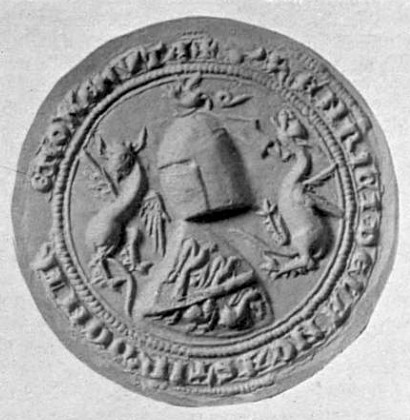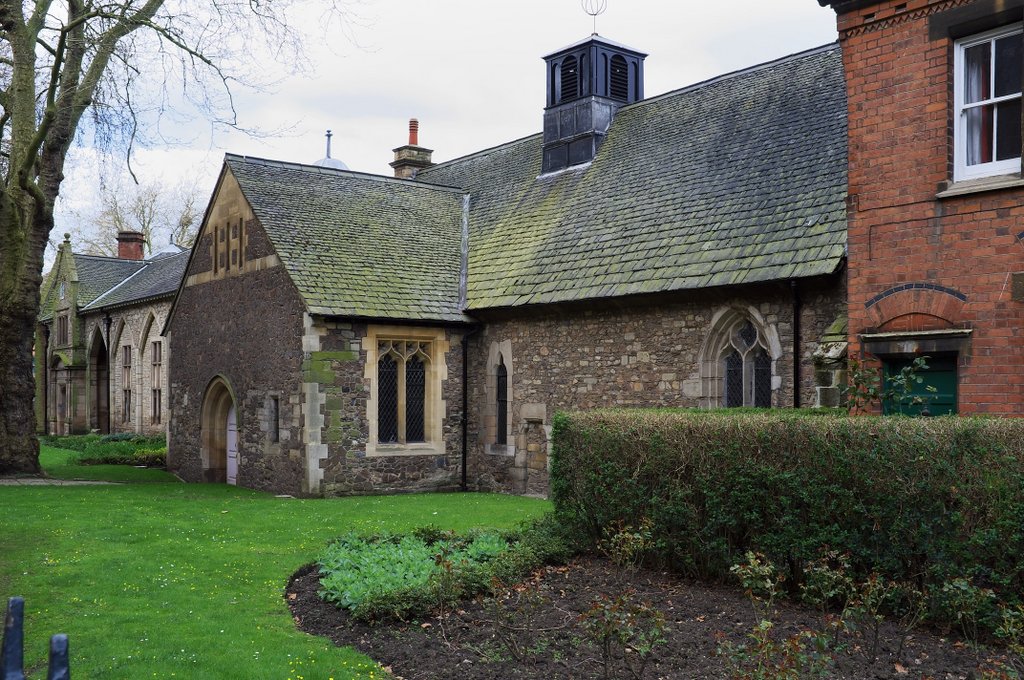Henry, 3rd Earl Of Lancaster on:
[Wikipedia]
[Google]
[Amazon]
 Henry, 3rd Earl of Leicester and Lancaster ( – 22 September 1345) was a grandson of King
Henry, 3rd Earl of Leicester and Lancaster ( – 22 September 1345) was a grandson of King

Image:Arms of Henry, 3rd Earl of Leicester and Lancaster.svg,
 Henry, 3rd Earl of Leicester and Lancaster ( – 22 September 1345) was a grandson of King
Henry, 3rd Earl of Leicester and Lancaster ( – 22 September 1345) was a grandson of King Henry III of England
Henry III (1 October 1207 – 16 November 1272), also known as Henry of Winchester, was King of England, Lord of Ireland, and Duke of Aquitaine from 1216 until his death in 1272. The son of King John and Isabella of Angoulême, Henry as ...
(1216–1272) and was one of the principals behind the deposition of King Edward II
Edward II (25 April 1284 – 21 September 1327), also called Edward of Caernarfon, was King of England and Lord of Ireland from 1307 until he was deposed in January 1327. The fourth son of Edward I, Edward became the heir apparent to ...
(1307–1327), his first cousin.
Origins
He was the younger son ofEdmund Crouchback
Edmund, Earl of Lancaster and Earl of Leicester (16 January 12455 June 1296) nicknamed Edmund Crouchback was a member of the House of Plantagenet. He was the second surviving son of King Henry III of England and Eleanor of Provence. In his ch ...
, 1st Earl of Lancaster, Earl of Leicester
Earl of Leicester is a title that has been created seven times. The first title was granted during the 12th century in the Peerage of England. The current title is in the Peerage of the United Kingdom and was created in 1837.
Early creation ...
, a son of King Henry III by his wife Eleanor of Provence
Eleanor of Provence (c. 1223 – 24/25 June 1291) was a French noblewoman who became Queen of England as the wife of King Henry III from 1236 until his death in 1272. She served as regent of England during the absence of her spouse in 1253.
A ...
. Henry's mother was Blanche of Artois, Queen Dowager of Navarre.
Henry's elder brother Thomas, 2nd Earl of Lancaster, succeeded their father in 1296, but Henry was summoned to Parliament
In modern politics, and history, a parliament is a legislative body of government. Generally, a modern parliament has three functions: representing the electorate, making laws, and overseeing the government via hearings and inquiries. ...
on 6 February 1298/99 by writ directed to ''Henrico de Lancastre nepoti Regis'' ("Henry of Lancaster, nephew of the king", Edward I), by which he is held to have become Baron Lancaster. He took part in the Siege of Caerlaverock
Caerlaverock Castle is a moated triangular castle first built in the 13th century. It is located on the southern coast of Scotland, south of Dumfries, on the edge of the Caerlaverock National Nature Reserve. Caerlaverock was a stronghold of t ...
in July 1300.
Petition for succession and inheritance
After a period of long-standing opposition to King Edward II and his advisors, including joining two open rebellions, Henry's brotherThomas
Thomas may refer to:
People
* List of people with given name Thomas
* Thomas (name)
* Thomas (surname)
* Saint Thomas (disambiguation)
* Thomas Aquinas (1225–1274) Italian Dominican friar, philosopher, and Doctor of the Church
* Thomas the ...
was convicted of treason, executed and had his lands and titles forfeited in 1322. Henry did not participate in his brother's rebellions; he later petitioned for his brother's lands and titles, and on 29 March 1324 he was invested as Earl of Leicester.
A few years later, shortly after his accession in 1327, the young Edward III of England
Edward III (13 November 1312 – 21 June 1377), also known as Edward of Windsor before his accession, was King of England and Lord of Ireland from January 1327 until his death in 1377. He is noted for his military success and for restoring r ...
returned the earldom of Lancaster to him, along with other lordships such as that of Bowland. He may have inherited the Barony of Halton
The Barony of Halton, in Cheshire, England, comprised a succession of 15 barons and hereditary Constables of Chester under the overlordship of the Earl of Chester. It was not an English feudal barony granted by the king but a separate class of ...
.
Capture and custody of the King
On the Queen's return to England in September 1326 withRoger Mortimer, 1st Earl of March
Roger Mortimer, 3rd Baron Mortimer of Wigmore, 1st Earl of March (25 April 1287 – 29 November 1330), was an English nobleman and powerful Marcher Lord who gained many estates in the Welsh Marches and Ireland following his advantageous marria ...
, Henry joined her party against King Edward II, which led to a general desertion of the King's cause and overturned the power of Hugh le Despenser, 1st Earl of Winchester
Hugh le Despenser (1 March 126127 October 1326), sometimes referred to as "the Elder Despenser", was for a time the chief adviser to King Edward II of England. He was created a baron in 1295 and Earl of Winchester in 1322. One day after being ...
, and his son Hugh the younger.
Henry was sent in pursuit and captured the King at Neath
Neath (; cy, Castell-nedd) is a market town and community situated in the Neath Port Talbot County Borough, Wales. The town had a population of 50,658 in 2011. The community of the parish of Neath had a population of 19,258 in 2011. Historica ...
in South Wales
South Wales ( cy, De Cymru) is a loosely defined region of Wales bordered by England to the east and mid Wales to the north. Generally considered to include the historic counties of Glamorgan and Monmouthshire, south Wales extends westwards ...
. He was appointed to take charge of the King and was responsible for his custody at Kenilworth Castle.
Full restoration and reward
Henry was appointed head of the regency council for the new king,Edward III
Edward III (13 November 1312 – 21 June 1377), also known as Edward of Windsor before his accession, was King of England and Lord of Ireland from January 1327 until his death in 1377. He is noted for his military success and for restoring r ...
, and was also appointed captain-general of all the King's forces in the Scottish Marches
Scottish Marches was the term used for the Anglo-Scottish border during the late medieval and early modern eras, characterised by violence and cross-border raids. The Scottish Marches era came to an end during the first decade of the 17th century ...
. He was appointed Constable of Lancaster Castle and High Sheriff of Lancashire in 1327. He helped the young king put an end to Mortimer's regency and tyranny, having him declared a traitor and executed in 1330.
Later life and death
In about the year 1330, he becameblind
Blind may refer to:
* The state of blindness, being unable to see
* A window blind, a covering for a window
Blind may also refer to:
Arts, entertainment, and media Films
* ''Blind'' (2007 film), a Dutch drama by Tamar van den Dop
* ''Blind' ...
(Prestwich states Henry was going blind around 1329).
Henry spent the last fifteen years of his life at Leicester Castle. There he founded a hospital for the poor and infirm in an extension of the castle bailey. It became known as the Newarke, and Henry was buried in the hospital chapel when he died in 1345. The King and Queen attended his funeral. He was succeeded as Earl of Lancaster and Leicester by his eldest son, Henry of Grosmont, later first Duke of Lancaster. Henry had his father's remains moved to the collegiate Church of the Annunciation of Our Lady of the Newarke, which he had built when he enhanced his father's foundation. 
Nickname
According to Jean Le Bel, he was nicknamed ''Wryneck'', or ''Tors-col'' in French, possibly due to amedical condition
A disease is a particular abnormal condition that negatively affects the structure or function (biology), function of all or part of an organism, and that is not immediately due to any external injury. Diseases are often known to be medica ...
. Froissart repeated that statement in his ''Chronicles''.
Issue
He married Maud Chaworth, before 2 March 1296/1297. Henry and Maud had seven children: * Henry of Grosmont, Duke of Lancaster, (–1361) * Blanche of Lancaster, Baroness Wake of Liddell, (-) married Thomas Wake, 2nd Baron Wake of Liddell *Maud of Lancaster
Maud of Lancaster, Countess of Ulster (c. 1310 – 5 May 1377) was an English noblewoman and the wife of William Donn de Burgh, 3rd Earl of Ulster. She was the mother of Elizabeth de Burgh, ''suo jure'' Countess of Ulster. Her second husband w ...
, (about 1310–1377); married (1) William de Burgh, 3rd Earl of Ulster (died c.1333) and (2) Ralph de Ufford, Justiciar of Ireland
The chief governor was the senior official in the Dublin Castle administration, which maintained English and British rule in Ireland from the 1170s to 1922. The chief governor was the viceroy of the English monarch (and later the British monarc ...
(died 1346), and had descendants by both.
* Joan of Lancaster, (about 1312–1345); married John de Mowbray, 3rd Baron Mowbray and had descendants
* Isabel of Lancaster, Abbess of Amesbury, (about 1317 – after 1347)
* Eleanor of Lancaster, (about 1318–1371/72) married (1) John De Beaumont, 2nd Baron Beaumont and (2) 5 Feb 1344/5, Richard FitzAlan, 3rd Earl of Arundel and had descendants.
* Mary of Lancaster, (about 1320–1362), who married Henry de Percy, 3rd Baron Percy, and was the mother of Henry Percy, 1st Earl of Northumberland
Henry Percy, 1st Earl of Northumberland, 4th Baron Percy, titular King of Mann, KG, Lord Marshal (10 November 134120 February 1408) was the son of Henry de Percy, 3rd Baron Percy, and a descendant of Henry III of England. His mother was M ...
and had descendants.
Arms
Prior to his restoration to his earldoms, Henry bore the royal arms of King Henry III, differenced by ''a bend azure''. Upon his restoration, his difference changed, to ''a labelFrance
France (), officially the French Republic ( ), is a country primarily located in Western Europe. It also comprises of overseas regions and territories in the Americas and the Atlantic, Pacific and Indian Oceans. Its metropolitan ar ...
of three points'' (that is to say ''a label of three points azure each charged with three fleur-de-lys or''.
Shield
A shield is a piece of personal armour held in the hand, which may or may not be strapped to the wrist or forearm. Shields are used to intercept specific attacks, whether from close-ranged weaponry or projectiles such as arrows, by means of ...
prior to restoration
Image:Arms of Edmund Crouchback, Earl of Leicester and Lancaster.svg, Shield as Earl of Lancaster and Leicester
Ancestry
In fiction
Henry is a supporting character in '' Les Rois maudits'' (''The Accursed Kings''), a series of French historical novels byMaurice Druon
Maurice Druon (23 April 1918 – 14 April 2009) was a French novelist and a member of the Académie Française, of which he served as "Perpetual Secretary" (chairman) between 1985 and 1999.
Life and career
Born in Paris, France, Druon was the s ...
. He was portrayed by in the 1972 French miniseries adaptation of the series, and by in the 2005 adaptation.
Notes
References
* * * * * * * {{DEFAULTSORT:Henry, 3rd Earl Of Lancaster 1280s births 1345 deaths 13th-century English nobility 14th-century English nobility 3rd Earl of Leicester High Sheriffs of Lancashire House of Plantagenet Lord High Stewards Blind people from England Blind royalty and nobility Barons of Halton Earls of Lancaster